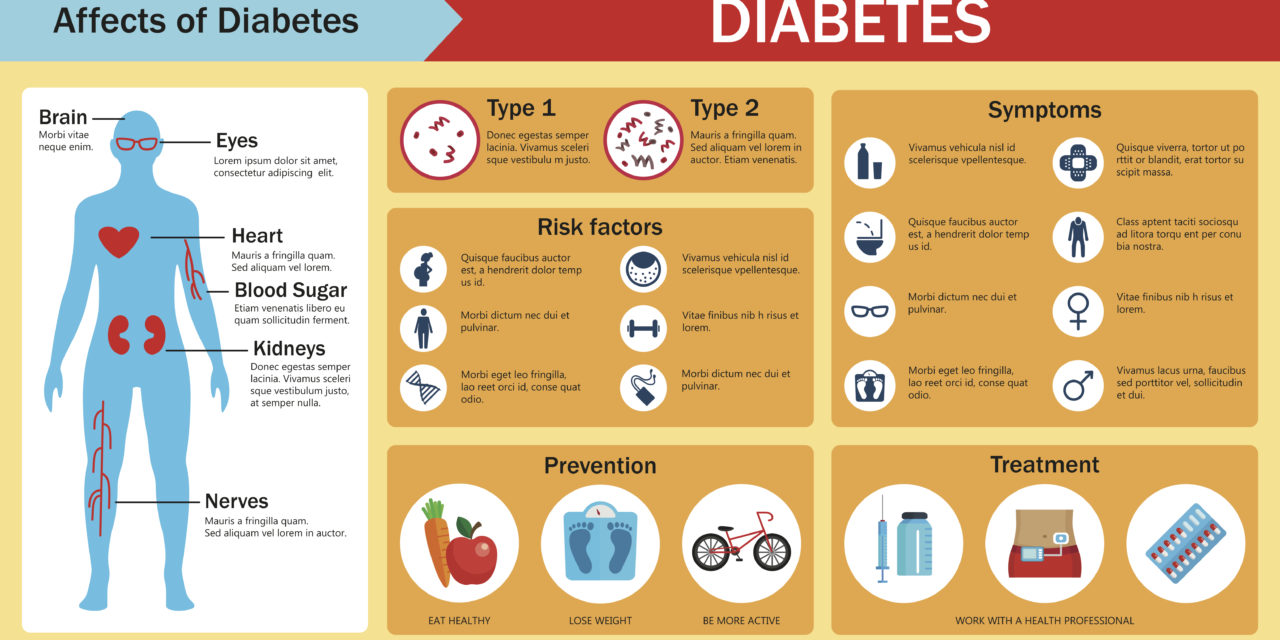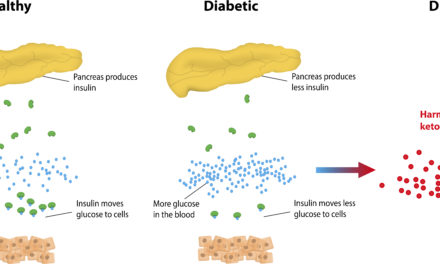Diabetes is a condition where the amount of glucose in your blood is too high. Glucose comes from the food you eat and it is the main source of fuel for the body. For people with diabetes, the body cannot use glucose properly, which leads to high glucose in the blood. This is because the Pancreas does not produce any insulin, or not enough, to help glucose enter your body’s cells. In other words, the insulin that is produced is not working properly, also known as insulin resistance. There are three types of diabetes: type 1 diabetes, type 2 diabetes and gestational diabetes.
Type 1 Diabetes
Type 1 Diabetes (formerly called juvenile-onset diabetes or insulin-dependent diabetes) is an autoimmune disease where the body attacks and destroys the cells in the pancreas that produce insulin. People who have type 1 diabetes must inject insulin to help the body use glucose from food. When insulin is not delivered to the cells, the glucose stays in the bloodstream and the body cannot use it for energy. This may lead to feeling tired, hungry and having increased thirst. Other symptoms include frequent urination and weight loss.
Risk Factors for Type 1 Diabetes:
- Family history of type 1 diabetes
- Having other conditions that affect the immune system will also increase the risk of developing type 1 diabetes.
- Bottle-feeding or short duration of breast-feeding, heavy birth weight, and mothers 35 or older at childbirth, will give children a greater possibility of developing type 1 diabetes.
Type 2 Diabetes
Type 2 Diabetes (formerly called non-insulin-dependent diabetes mellitus or adult onset diabetes) is the most common type of diabetes, accounting for about 90% of the diabetes population in the world. There are different problems that lead to type 2 diabetes: the pancreas is not producing a sufficient amount of insulin, the insulin produced is not performing its primary jobs and the liver is making more glucose than what the body needs. The three problems mentioned will permit glucose to build up in the body instead of going to the cells which will lead to other diabetes complications. Some symptoms for type 2 diabetes are tiredness, blurry vision, infections that do not heal and numbness or tingling in the feet or hands.
Risk Factors for Type 2 Diabetes:
- Family history of type 2 diabetes
- Age over 45
- Overweight
- High blood pressure
- Abnormal blood cholesterol or triglycerides
- History of gestational diabetes during pregnancy
- Cardiovascular disease
- Inactive lifestyle
- Smoking
- Polycystic ovary syndrome
Gestational Diabetes
Gestational diabetes mellitus (GDM) is a type of diabetes that arises during pregnancy (usually during the second or third trimester). In some women, GDM occurs because the body cannot produce enough insulin to meet the extra needs of pregnancy.
Diabetes Treatment
Treatment for diabetes helps keep blood sugar levels steady and alleviates symptoms. Controlling blood sugar will also help reduce the risk of complications, such as problems with the kidneys, eyes, heart, skin, mouth and feet. Please consult your doctors for specific diabetes treatment therapy. The treatment varies according to how much insulin the body makes, and how well the body is able to use available insulin.
Diabetes cannot be cured, but it can be controlled. Diabetes care is likely to involve lifestyle changes that will have enormous health benefits that allow a person to continue enjoying the life.









